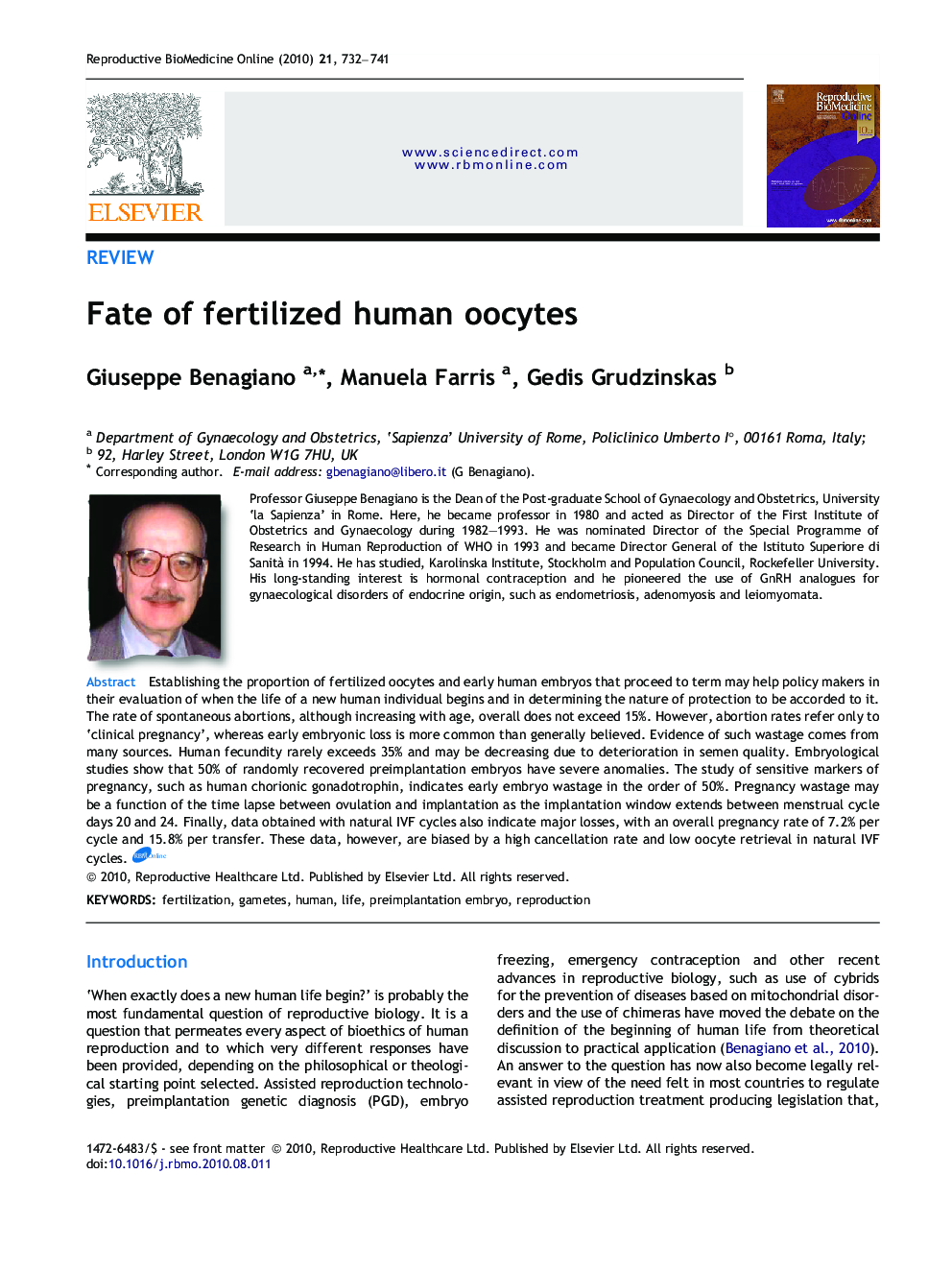| Article ID | Journal | Published Year | Pages | File Type |
|---|---|---|---|---|
| 3971205 | Reproductive BioMedicine Online | 2010 | 10 Pages |
Abstract
Establishing the proportion of fertilized oocytes and early human embryos that, under physiological conditions, proceed to term may help ethicists, philosophers and policy makers in their evaluation of when the life of a new human individual begins and in determining the nature of protection to be accorded to it at the various stages of development. In this respect, the rate of spontaneous abortions, although increasing with age, overall does not exceed 15%. The situation however, is much more complex, since abortion rates refer only to 'clinical pregnancy' and evidence has been accumulating that early embryonic loss among fertile women is much more common than generally believed. Evidence of early embryo wastage is of complex nature and comes from many sources: first, human fecundity rarely exceeding 35% and may be decreasing due to deterioration in semen quality; second, embryological studies showing that 50% of pre-implantation embryos had severe anomalies; third, sensitive markers of pregnancy indicate embryo wastage in the order of 50%, during the first 2Â weeks of gestation. There is also evidence that pregnancy wastage may be a function of the time lapse between ovulation and implantation; the implantation window seems to extend between menstrual cycle day 20 and 24. Finally, there are data obtained with natural IVF cycles indicating major losses, with an overall pregnancy rate of 7.2% per cycle and 15.8% per transfer in a meta-analysis. These data however, are biased by a high cancellation rate and low oocyte retrieval in natural IVF cycles.
Related Topics
Health Sciences
Medicine and Dentistry
Obstetrics, Gynecology and Women's Health
Authors
Giuseppe Benagiano, Manuela Farris, Gedis Grudzinskas,
